Invited Speakers
David Abramson, Director, Centre for Research Computing — The University of Queensland
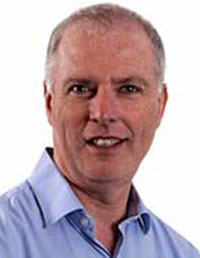
David has been involved in computer architecture and high performance computing research since 1979.
He has held appointments at Griffith University, CSIRO, RMIT and Monash University.
Prior to joining UQ, he was the Director of the Monash e-Education Centre, Science Director of the Monash e-Research Centre, and a Professor of Computer Science in the Faculty of Information Technology at Monash.
From 2007 to 2011 he was an Australian Research Council Professorial Fellow.
David has expertise in High Performance Computing, distributed and parallel computing, computer architecture and software engineering.
He has produced in excess of 200 research publications, and some of his work has also been integrated in commercial products. One of these, Nimrod, has been used widely in research and academia globally, and is also available as a commercial product, called EnFuzion, from Axceleon.
His world-leading work in parallel debugging is sold and marketed by Cray Inc, one of the world's leading supercomputing vendors, as a product called ccdb.
David is a Fellow of the Association for Computing Machinery (ACM), the Institute of Electrical and Electronic Engineers (IEEE), the Australian Academy of Technology and Engineering (ATSE), and the Australian Computer Society (ACS).
Data Centric Debugging: Scaling to Infinity and Beyond?
Debugging software is a critical activity, but there are very few software tools that address the problem well. The most widely available tools are very low level, and have hardly changed in years. These traditional tools allow a programmer to control the execution of each process (or thread) and to examine and manipulate the state of every thread. However, modern scientific codes have thousands of independent threads, and they manipulate enormous data structures. Any wonder that debuggers are not widely used — traditional tools simply don't scale to meet the needs of modern supercomputing. As we move to the exa-scale, this can only get worse.
Some years ago we pioneered data centric debugging. In data centric debugging a user reasons about an application's state, regardless of how many threads are involved, and how they are mapped onto the machine. Our most mature implementation of this is embodied in Cray's CCDB, which allows a programmer to debug a new version of a code against a reference version. However, a more general form of data centric debugging allows a user to assert statistical tests on data structures, and these can be used to detect anomalies as they arise.
Importantly, data centric debugging can scale with both the problem size and the machine because we have parallelised the debugging operations themselves. Data centric debugging also addresses another issue that arises in exa-scale — namely that computations will be no longer be bit-wise repeatable — a long held tenet of scientific computing. Data centric thinking is statistical, and thus outliers are detected rather than small changes in numeric values.
This talk will introduce data centric debugging and discuss various implementation issues.
Watch the presentation | View presentation slides (PDF)
Bill Gropp, Professor, University of Illinois
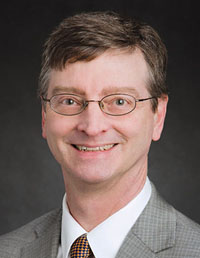
William Gropp holds the Thomas M. Siebel Chair in the Department of Computer Science, is Director of the Parallel Computing Institute and Chief Scientist of the National Center for Supercomputing Applications at the University of Illinois in Urbana-Champaign. He received his Ph.D. in Computer Science from Stanford University in 1982. He was on the faculty of the Computer Science Department of Yale University from 1982-1990 and from 1990-2007, he was a member of the Mathematics and Computer Science Division at Argonne National Laboratory. His research interests are in parallel computing, software for scientific computing, and numerical methods for partial differential equations. He is a Fellow of ACM, IEEE, and SIAM and a member of the National Academy of Engineering.
The Perils of Success: Meeting the Needs for Advanced Computing
The importance of computing for science has never been greater; everything from continued advances in compute capabilities to new ways of integrating and working with data are changing our world. But with these changes come challenges in everything from preserving the investment in scientific software to maintaining the human infrastructure necessary to transition science codes to the systems to be deployed in 2020 and beyond. I will discuss the recommendations and findings of the recent National Academies report for NSF, "Future Directions for NSF Advanced Computing Infrastructure to Support U.S. Science and Engineering in 2017-2020," and the role of the computational science community in creating a world-leading advanced computing infrastructure.
Watch the presentation | View presentation slides (PDF)
Wen-mei Hwu, Professor, University of Illinois

Wen-mei W. Hwu is the Walter J. ("Jerry") Sanders III-Advanced Micro Devices Endowed Chair in Electrical and Computer Engineering in the Coordinated Science Laboratory of the University of Illinois at Urbana-Champaign. Dr. Hwu received his Ph.D. degree in Computer Science from the University of California, Berkeley, 1987.
His research interests are in the areas of architecture, implementation, software for high-performance computer systems, and parallel processing. He is a Principal Investigator (PI) for the petascale Blue Waters system, is co-director of the Intel- and Microsoft-funded Universal Parallel Computing Research Center (UPCRC), and PI for the world's first NVIDIA GPU Center of Excellence. At the Illinois Coordinated Science Lab, he is the director of the OpenIMPACT project, which has delivered new compiler and computer architecture technologies to the computer industry since 1987. He also serves as the Soft Systems Theme leader of the MARCO/DARPA Gigascale Silicon Research Center (GSRC) and on the Executive Committees of both the GSRC and the MARCO/DARPA Center for Circuit and System Solutions (C2S2).
For his contributions to the areas of compiler optimization and computer architecture, he received the 1993 Eta Kappa Nu Outstanding Young Electrical Engineer Award, the 1994 Xerox Award for Faculty Research, the 1994 University Scholar Award of the University of Illinois, the 1997 Eta Kappa Nu Holmes MacDonald Outstanding Teaching Award, the 1998 ACM SigArch Maurice Wilkes Award, the 1999 ACM Grace Murray Hopper Award, the 2001 Tau Beta Pi Daniel C. Drucker Eminent Faculty Award, and the 2002 ComputerWorld Honors Archive Medal. He is a fellow of IEEE and of the ACM.
From 1997 to 1999, Prof. Hwu served as chairman of the Computer Engineering Program at the University of Illinois. In 2007 he introduced a new engineering course in massively parallel processing, which he co-taught with David Kirk, Chief Scientist of NVIDIA. In 2008, he was named co-director of one of two Universal Parallel Computing Research Centers sponsored by Microsoft and Intel.
What is Driving Heterogeneity in HPC?
Watch the presentation | View presentation slides (PDF)
Jim Kurose, Assistant Director of NSF for CISE
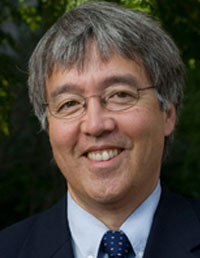
Dr. Jim Kurose is the Assistant Director of the National Science Foundation (NSF) for the Computer and Information Science and Engineering (CISE). He leads the CISE Directorate, with an annual budget of more than $900 million, in its mission to uphold the nation's leadership in scientific discovery and engineering innovation through its support of fundamental research in computer and information science and engineering and transformative advances in cyberinfrastructure. Dr. Kurose also serves as co-chair of the Networking and Information Technology Research and Development Subcommittee of the National Science and Technology Council Committee on Technology, facilitating the coordination of networking and information technology research and development efforts across Federal agencies.
Dr. Kurose is on leave from the University of Massachusetts Amherst (UMass Amherst), where he has served as Distinguished Professor at the School of Computer Science since 2004. He has also served in a number of administrative roles at UMass Amherst including Chair of the Department of Computer Science, Interim Dean and Executive Associate Dean of the College of Natural Sciences and Mathematics, and senior faculty advisor to the vice chancellor for research and engagement. In addition, Dr. Kurose has been a Visiting Scientist at IBM Research, INRIA, Institut EURECOM, the University of Paris, the Laboratory for Information, Network and Communication Sciences, and Technicolor Research Labs.
His research interests include network protocols and architecture, network measurement, sensor networks, multimedia communication, and modeling and performance evaluation. He was one of the founders of the Commonwealth Information Technology Initiative (CITI) and helped lead the founding of the Massachusetts Green High Performance Computing Center. Dr. Kurose has served on many national and international advisory boards and panels, including the Board of Directors of the Computing Research Association, and the scientific advisory boards of IMDEA Networks in Madrid and the Laboratory for Information, Network and Communication Sciences in Paris. With Keith Ross, he is the co-author of the textbook, Computer Networking, a top down approach (6th edition) published by Addison-Wesley/Pearson.
He has received numerous awards for his research and teaching. He is the recipient of several conference best paper awards, the IEEE InfocomAchievement Award, and the ACM Sigcomm Test of Time Award. He is the recipient of the Outstanding Teacher Award from the National Technological University (8 times), the Outstanding Teaching Award of the Northeast Association of Graduate Schools, and the IEEE CS Taylor Booth Education Medal. He has twice received an IBM Faculty Development Award and a Lilly Teaching Fellowship.
Dr. Kurose received his Ph.D. in computer science from Columbia University and a Bachelor of Arts degree in physics from Wesleyan University. He is a Fellow of the Association for Computing Machinery (ACM) and the Institute of Electrical and Electronic Engineers (IEEE).
Advanced CyberInfrastructure: Current Activities and a Look Forward
Watch the presentation | View presentation slides (PDF)
Paul Morin, Director, Polar Geospatial Center
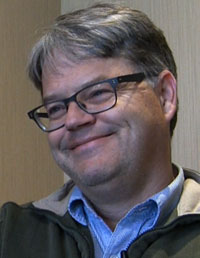
Paul Morin is Director of the Polar Geospatial Center, an NSF science and logistics support center at the University of Minnesota. Morin serves as the National Academy of Sciences-appointed U.S. representative to the Standing Committee on Antarctic Geographic Information under the Scientific Committee for Antarctic Research (ie, the Antarctic Treaty System). One of his current projects is ArcticDEM a White House initiative to produce a high-resolution, time-dependent elevation model of the Arctic using Blue Waters. http://www.c-span.org/video/?c4549841/arctic-dem. Morin has dozens of publications in a variety of fields including remote sensing, geoscience education, the carbon cycle, and scientific visualization. His outreach projects have been featured on the Colbert Report (http://www.cc.com/video-clips/l1sl1c/the-colbert-report-water-is-life) and Wait Wait...Don't Tell Me (http://www.npr.org/2012/07/21/157129462/panel-round-two).
14 Trillian Grid Cells
Watch the presentation | View presentation slides (PDF)
Peter Ungaro, President & CEO, Cray Inc.
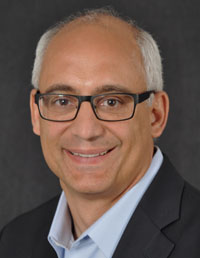
Peter Ungaro serves as President and Chief Executive Officer. Mr. Ungaro joined Cray in 2003 as the senior vice president responsible for sales and marketing. He was appointed president in March 2005 and chief executive officer in August 2005. Prior to joining Cray in 2003, he served as vice president of worldwide deep computing sales for IBM, where he led global sales of all IBM server and storage products for high performance computing, life sciences, digital media and business intelligence markets. Prior to that role, he served in a variety of sales leadership positions at IBM starting in 1991. Mr. Ungaro received a B.A. from Washington State University.

